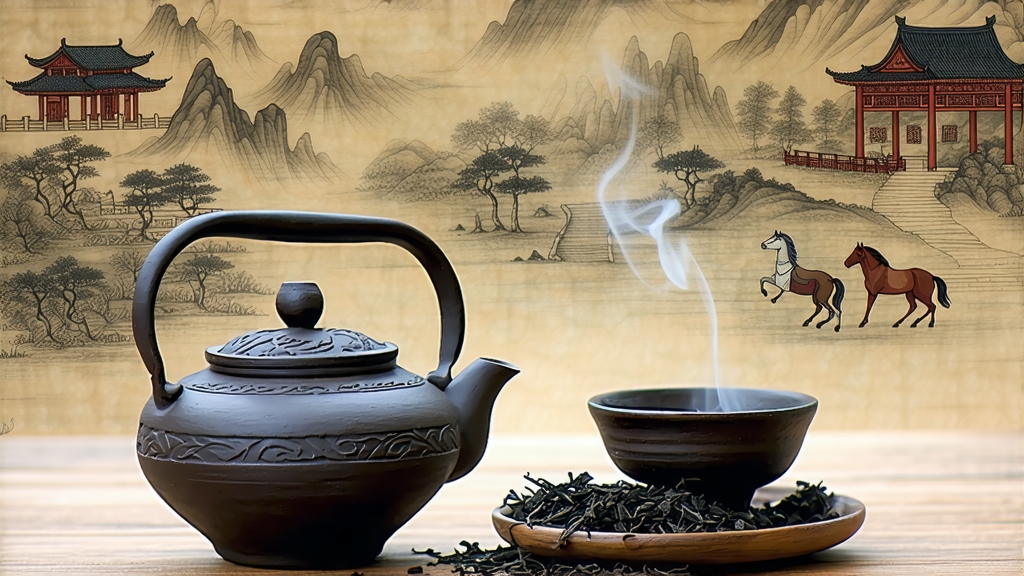
Tucked away in the humid mountains of southern China’s Guangxi Zhuang Autonomous Region, Liu Bao cha has quietly matured for centuries, yet remains largely unknown outside Asia. To the global tea community that reveres Pu-erh, Liu Bao offers an equally complex, often more affordable, and historically older example of post-fermented dark tea. Its story begins during the Tang dynasty, when caravans carried compressed leaves from the small township of Liu Bao along the Pearl River system to Guangzhou and eventually to Hong Kong and Southeast Asia. Traders discovered that the steamy holds of junks and the tropical heat of warehouses transformed the tea, softening bitterness and generating a deep, medicinal sweetness. By the Qing era, Liu Bao had become a currency of its own, bartered for opium, spices, and rubber across the South China Sea.
Unlike the Yunnan big-leaf varietal used for Pu-erh, Liu Bao starts with a medium-leaf Camellia sinensis cultivar native to the limestone karsts of Wuzhou prefecture. Farmers pluck one bud plus three or four leaves in late April, after the spring rains have swollen the shoots but before the summer heat toughens them. The harvest is spread on bamboo trays to wither under mountain mist, reducing moisture to roughly 65 %. Once the leaves feel leathery, they are tossed into wood-fired woks heated to 200 °C for kill-green. The short, high-temperature roast preserves enzymes that will later drive microbial fermentation. While Yunnan sun-dries its maocha, Liu Bao is piled 30 cm deep in humid rooms where it undergoes piling (wo dui) for 10–12 h, a deliberate re-introduction of the same controlled composting that once happened accidentally on long boat rides. Thermophilic bacteria and Aspergillus molds raise the heap temperature to 45 °C, turning the leaves a dark olive and coaxing out a scent reminiscent of betel nut and damp bark.
The still-warm maocha is steamed, then pressed into 40 kg bamboo baskets lined with untreated banana leaves. These baskets are stacked seven high in riverside warehouses where relative humidity hovers at 85 %. For the next three years, and often for thirty, the tea breathes through the woven bamboo, exchanging aromas with the leaf-wrapping and the camphor-wood rafters. Each season the tea master rotates the stacks, moving top baskets down so that every cake absorbs the same microclimate of mist, wood smoke, and subtropical heat. Over time, the originally astringent liquor mellows into a garnet-black infusion that can be steeped a dozen times without collapsing.
Western drinkers sometimes confuse Liu Bao with cooked Pu-erh, yet side-by-side the differences are vivid. Liu Bao carries a cleaner, more vertical sweetness, often compared to longan or dried jujube, and lacks the earthy “pond” note that marks many shou Pu-erhs. The texture is lighter, almost buoyant, gliding across the tongue before settling into a slow, camphor coolness. Aged examples develop a prized “ginseng fragrance” (ren shen xiang), a lingering aroma that appears minutes after swallowing, as if the empty cup itself were exhaling medicine.
To brew Liu Bao respectfully, begin with 5 g of leaf—ideally a basket-aged cake from 2008 or earlier—for every 100 ml of vessel. A thin-walled porcelain gaiwan or a Yixing zi-sha teapot seasoned only with dark teas will suffice. Rinse once with water just off the boil, pouring slowly to awaken the compressed strands without scalding them. The first proper infusion should last no more than 10 s; expect a clear mahogany liquor that smells of rain-soaked tree bark. Increase steeping time by 5 s each round, pushing the tea until the eighth infusion when color finally pales. Alternatively, for a more contemplative session, simmer 8 g in 600 ml of spring water for 8 min over a charcoal brazier. The resulting broth is almost coffee-black, silky, and so naturally sweet that milk or sugar would feel sacrilegious.
Professional cupping follows a tighter protocol. Place 3 g in a 150 ml white porcelain taster, infuse for 5 min, then evaluate clarity first: a brilliant red-orange edge against white porcelain signals proper aging without mold. Slurp loudly, aspirating the liquor across the palate to atomize volatile compounds. Look for a tri-layered profile: top notes